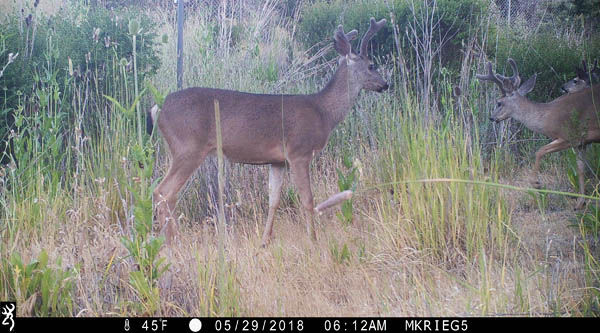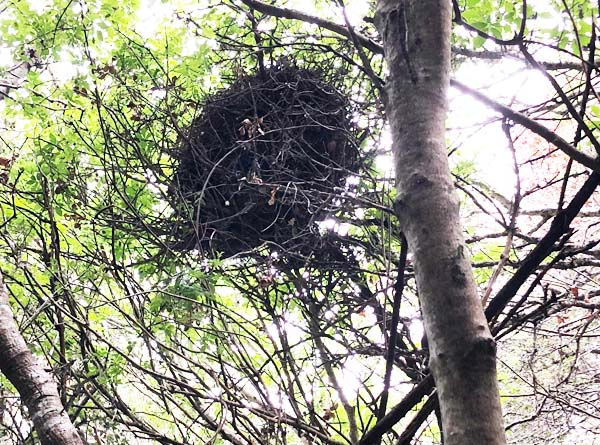Our Wildlife Cameras Are Recording Everything
- ginger789
- Jun 29, 2018
- 3 min read
Finally it’s the beginning of summer and the trails are alive with activity—human and animal. Our wildlife cameras are capturing it all, including those changes that are caused by natural seasonal cycles as well as adaptations in animal behavior that are likely influenced by people out on the trails day and night.
Summer changes
It’s only the first week of summer and the heat has already impacted the environment. Although the creek that is adjacent to my favorite trail has dried up, there is another water source on the trail that wildlife can easily access. A spring at the base of the trail consistently produces fresh, clear water. And, there still is an abundance of vegetation around the trail—food for the deer and resident rodents who in turn attract predators. It may be a different story later in the summer when the vegetation dies off.
Baby animals on the trail
Spring brings new life. Many youngsters, such as these skunk kits, are now old enough to accompany their mums on the trail. Although I love being entertained by them, I’m grateful that I can watch them on a computer monitor.
Our wildlife cameras have been fortunate to film deer families, including newborns, fawns and yearlings. It’s delightful to watch these youngsters bopping up the trail.
The deer are plentiful—the majority of wildlife our cameras are filming this month is deer. Camera #2 filmed these three bucks, each with 4 points. Note the velvet on their antlers. I am assuming that they are bros.

The impact of people on animals
People are impacting the wildlife on the trails. Wild animals, including mountain lions and bobcats will go out of their ways to not cross paths with people. They adjust their schedules and routes in order to avoid chance encounters. It’s rare to catch glimpses of felines during the day around well hiked trails—they wait until late at night and before dawn to venture out, those times when humans are usually asleep.

With the days becoming warm and long, camera #4 is filming a pattern. It is capturing videos of people traipsing the trail at all hours of the day, including late at night and before dawn, those times when mountain lions and bobcats are the most likely to take advantage of the trail. Although there may be other factors involved, such as seasonal cycles, animals appear to be shying away from the trail as it increases in popularity with people. Recently, we’ve only filmed a couple of bobcats late at night and no lions. I suspect that I won’t see the lions again until the fall or winter—I hope I’m wrong. Check out the time stamp on this video.
My favorite trail joins with another wildlife byway that meanders through a deep canyon until it reaches Crystal Springs Reservoir. This is a protected area with two man-made lakes—the west side is wild and virtually people-free. Only rangers and the few lucky Felidae volunteers, who maintain trail cameras, occasionally venture to that side of the lakes. Because wildlife rarely encounters humans in that protected area, they don’t need to limit their activities to late at night. These playful mountain lion youngsters and their mum were filmed at around 5:00 PM about one month ago.

This article wouldn’t be complete without checking in on the busy little woodrats. I found out this morning that these little guys are dusky-footed woodrats. Although it’s not clear on how they are being impacted by the hot weather and the increase of people hiking the trail, camera #4 is filming an abundance of them being productive at night, collecting twigs to build and repair their homes. We also caught one enterprising woodrat adding on to his/her penthouse suite high up in a tree.

The wildlife cameras are filming changes on the trails. Most are expected, caused by the cycle of seasons. Others may be caused by an increase of people enjoying popular trails throughout the day and into the night.
Marilyn Krieger, CCBC, The Cat Coach, LLC and author of Naughty No More! helps solve cat behavior challenges nationally and internationally through on site and remote consultations.
Marilyn enjoys educating people about cat behavior. She gives presentations throughout the United States as well as writes columns and articles for a variety of venues. Additionally Marilyn is a frequent guest on television and radio. She has appeared, along with her Bengals and Savannah Cat on Animal Planet, CBS, ABC, KGO and others.
Join Marilyn for lively discussions on her Facebook page







Comments